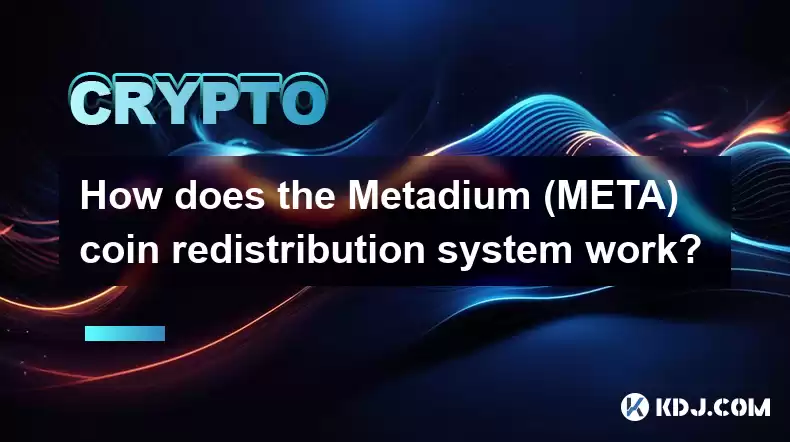-
 Bitcoin
Bitcoin $118000
-1.29% -
 Ethereum
Ethereum $3758
-3.52% -
 XRP
XRP $3.113
-5.04% -
 Tether USDt
Tether USDt $0.9998
-0.05% -
 BNB
BNB $818.5
-3.23% -
 Solana
Solana $181.9
-5.10% -
 USDC
USDC $0.9997
-0.04% -
 Dogecoin
Dogecoin $0.2239
-8.33% -
 TRON
TRON $0.3233
0.95% -
 Cardano
Cardano $0.7842
-6.81% -
 Hyperliquid
Hyperliquid $43.35
-2.12% -
 Sui
Sui $3.894
-9.97% -
 Stellar
Stellar $0.4176
-6.99% -
 Chainlink
Chainlink $17.97
-6.68% -
 Bitcoin Cash
Bitcoin Cash $576.7
-2.30% -
 Hedera
Hedera $0.2671
-7.23% -
 Avalanche
Avalanche $24.64
-6.12% -
 UNUS SED LEO
UNUS SED LEO $8.972
0.08% -
 Litecoin
Litecoin $108.1
-6.55% -
 Toncoin
Toncoin $3.198
-5.94% -
 Shiba Inu
Shiba Inu $0.00001325
-6.80% -
 Ethena USDe
Ethena USDe $1.001
-0.04% -
 Uniswap
Uniswap $10.27
-7.02% -
 Polkadot
Polkadot $3.935
-7.49% -
 Monero
Monero $317.7
-2.24% -
 Dai
Dai $0.9999
0.00% -
 Bitget Token
Bitget Token $4.550
-3.85% -
 Pepe
Pepe $0.00001179
-8.68% -
 Cronos
Cronos $0.1418
-2.34% -
 Aave
Aave $286.2
-6.49%
How does the Metadium (META) coin redistribution system work?
The Metadium (META) blockchain platform's coin redistribution system provides incentives through staking, airdrops, and usage-based rewards, encouraging active participation and rewarding contributors.
Jan 05, 2025 at 06:16 pm

Key Points:
- Metadium (META) is a blockchain platform designed to facilitate the development and deployment of decentralized applications.
- META has a unique coin redistribution system that incentivizes active participation in the network.
- The system operates through a combination of staking, airdrops, and usage-based rewards.
The Metadium (META) Coin Redistribution System:
1. Staking:
- Users can stake their META tokens to secure the network and earn rewards.
- Staking involves holding META tokens in a special wallet for a certain period.
- The staking reward rate is determined by the number of tokens staked and the duration of the staking period.
- By staking, users contribute to the stability and security of the Metadium blockchain, and they are rewarded accordingly.
2. Airdrops:
- Metadium periodically distributes free META tokens to active network participants.
- Airdrops are typically awarded to users who hold a certain amount of META tokens or participate in specific community events.
- Airdrops are designed to encourage participation in the network and reward loyal users.
3. Usage-Based Rewards:
- Users can earn META tokens by interacting with the Metadium platform.
- Rewards are given for activities such as creating and deploying decentralized applications, using the platform's decentralized file storage system, and participating in governance activities.
- By actively using the platform, users contribute to its growth and are rewarded accordingly.
4. Redistribution Mechanism:
- The META tokens earned through staking, airdrops, and usage-based rewards are periodically redistributed to the active network participants.
- The redistribution is done through a smart contract that ensures fair and transparent distribution.
- By implementing a coin redistribution system, Metadium aims to incentivize active participation, strengthen the network's security, and foster community involvement.
FAQs:
Q: What are the benefits of participating in the Metadium coin redistribution system?
A: Participants can earn rewards through staking, airdrops, and usage-based incentives. They also contribute to the network's security and stability, and support the growth of the Metadium ecosystem.
Q: How often does Metadium redistribute META tokens?
A: The redistribution schedule is subject to change, but it is typically done on a monthly basis.
Q: What factors determine the amount of META tokens I receive through the redistribution system?
A: The number of tokens staked, the duration of the staking period, personal usage of the Metadium platform, and participation in community events can all influence the amount of rewards received.
Q: Are there any risks associated with participating in the Metadium coin redistribution system?
A: The price of META tokens is subject to market fluctuations, so the value of your rewards may vary. Additionally, there is always a risk of hacking or other security breaches that could affect the Metadium platform. It is important to research and understand the risks before participating.
Disclaimer:info@kdj.com
The information provided is not trading advice. kdj.com does not assume any responsibility for any investments made based on the information provided in this article. Cryptocurrencies are highly volatile and it is highly recommended that you invest with caution after thorough research!
If you believe that the content used on this website infringes your copyright, please contact us immediately (info@kdj.com) and we will delete it promptly.
- Bitcoin, Remittix Presale, and DeFi Remittance: A New Yorker's Take
- 2025-07-29 14:30:12
- Bitcoin Price Stagnation: Is the Cryptocurrency Market at a Crossroads?
- 2025-07-29 12:30:12
- Coinbase Eyes India: Acquisition of CoinDCX on the Horizon?
- 2025-07-29 12:30:12
- Cryptocurrency, Treasuries, and Companies: A New Era?
- 2025-07-29 12:50:12
- Zhipu AI's GLM-4.5: China's Open-Source Challenger to GPT-4
- 2025-07-29 12:50:12
- Meme Coins Gone Viral: Presales, Trolling Cats, and the Future of Crypto Hype
- 2025-07-29 14:30:12
Related knowledge

What is Chainlink (LINK)?
Jul 22,2025 at 02:14am
Understanding Chainlink (LINK): The Decentralized Oracle NetworkChainlink is a decentralized oracle network designed to bridge the gap between blockch...

What is Avalanche (AVAX)?
Jul 22,2025 at 08:35am
What is Avalanche (AVAX)?Avalanche (AVAX) is a decentralized, open-source blockchain platform designed to support high-performance decentralized appli...

What is Polkadot (DOT)?
Jul 19,2025 at 06:35pm
Understanding the Basics of Polkadot (DOT)Polkadot (DOT) is a multi-chain network protocol designed to enable different blockchains to transfer messag...

What is Litecoin (LTC)?
Jul 23,2025 at 11:35am
Overview of Litecoin (LTC)Litecoin (LTC) is a peer-to-peer cryptocurrency that was created in 2011 by Charlie Lee, a former Google engineer. It is oft...

What is Monero (XMR)?
Jul 21,2025 at 10:07am
What is Monero (XMR)?Monero (XMR) is a decentralized cryptocurrency designed to provide enhanced privacy and anonymity for its users. Unlike Bitcoin a...

How to add indicators to Ethereum chart on TradingView?
Jul 19,2025 at 07:15am
What Is an Ethereum Chart on TradingView?The Ethereum chart on TradingView is a visual representation of the price movement of Ethereum (ETH) over a s...

What is Chainlink (LINK)?
Jul 22,2025 at 02:14am
Understanding Chainlink (LINK): The Decentralized Oracle NetworkChainlink is a decentralized oracle network designed to bridge the gap between blockch...

What is Avalanche (AVAX)?
Jul 22,2025 at 08:35am
What is Avalanche (AVAX)?Avalanche (AVAX) is a decentralized, open-source blockchain platform designed to support high-performance decentralized appli...

What is Polkadot (DOT)?
Jul 19,2025 at 06:35pm
Understanding the Basics of Polkadot (DOT)Polkadot (DOT) is a multi-chain network protocol designed to enable different blockchains to transfer messag...

What is Litecoin (LTC)?
Jul 23,2025 at 11:35am
Overview of Litecoin (LTC)Litecoin (LTC) is a peer-to-peer cryptocurrency that was created in 2011 by Charlie Lee, a former Google engineer. It is oft...

What is Monero (XMR)?
Jul 21,2025 at 10:07am
What is Monero (XMR)?Monero (XMR) is a decentralized cryptocurrency designed to provide enhanced privacy and anonymity for its users. Unlike Bitcoin a...

How to add indicators to Ethereum chart on TradingView?
Jul 19,2025 at 07:15am
What Is an Ethereum Chart on TradingView?The Ethereum chart on TradingView is a visual representation of the price movement of Ethereum (ETH) over a s...
See all articles

























































































